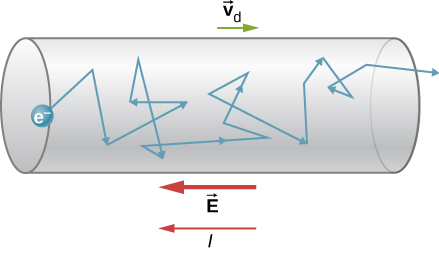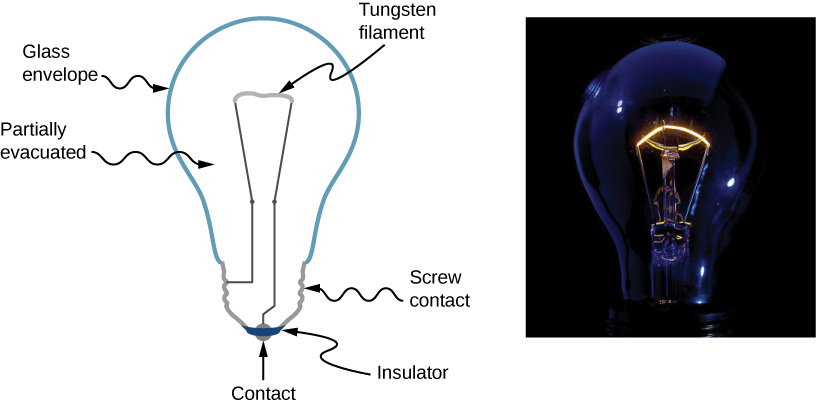| << Chapter < Page | Chapter >> Page > |

Free-electron collisions transfer energy to the atoms of the conductor. The electrical field does work in moving the electrons through a distance, but that work does not increase the kinetic energy (nor speed) of the electrons. The work is transferred to the conductor’s atoms, often increasing temperature. Thus, a continuous power input is required to keep a current flowing. (An exception is superconductors, for reasons we shall explore in a later chapter. Superconductors can have a steady current without a continual supply of energy—a great energy savings.) For a conductor that is not a superconductor, the supply of energy can be useful, as in an incandescent light bulb filament ( [link] ). The supply of energy is necessary to increase the temperature of the tungsten filament, so that the filament glows.

We can obtain an expression for the relationship between current and drift velocity by considering the number of free charges in a segment of wire, as illustrated in [link] . The number of free charges per unit volume, or the number density of free charges, is given the symbol n where . The value of n depends on the material. The shaded segment has a volume , so that the number of free charges in the volume is . The charge dQ in this segment is thus , where q is the amount of charge on each carrier. (The magnitude of the charge of electrons is .) Current is charge moved per unit time; thus, if all the original charges move out of this segment in time dt , the current is
Rearranging terms gives
where is the drift velocity, n is the free charge density, A is the cross-sectional area of the wire, and I is the current through the wire. The carriers of the current each have charge q and move with a drift velocity of magnitude .

Notification Switch
Would you like to follow the 'University physics volume 2' conversation and receive update notifications?